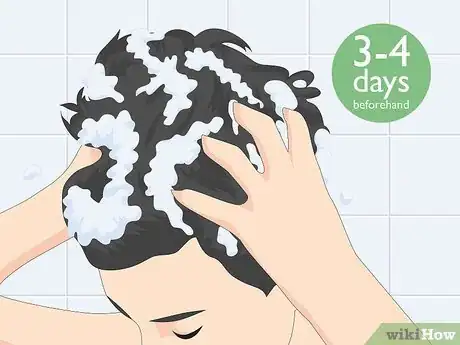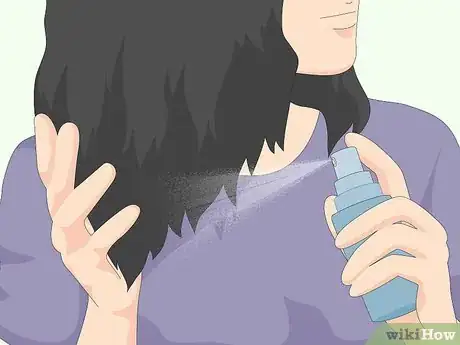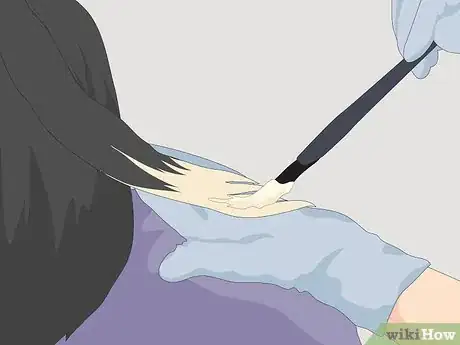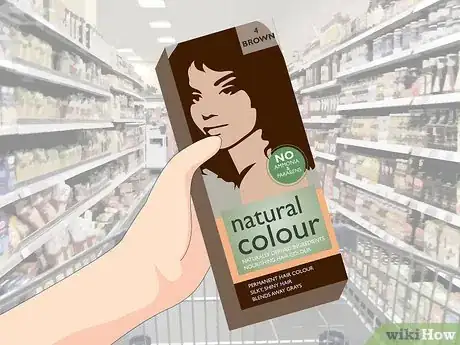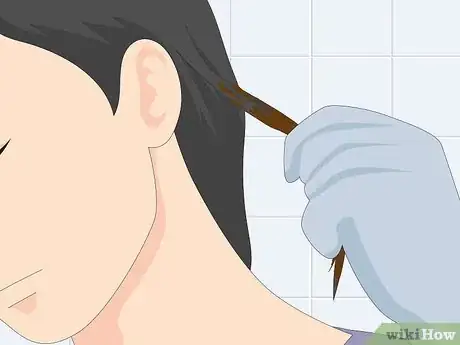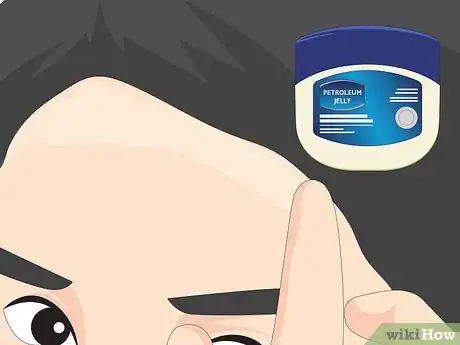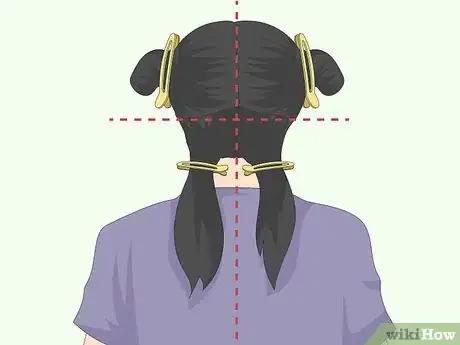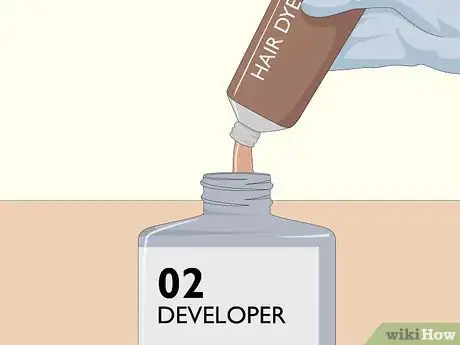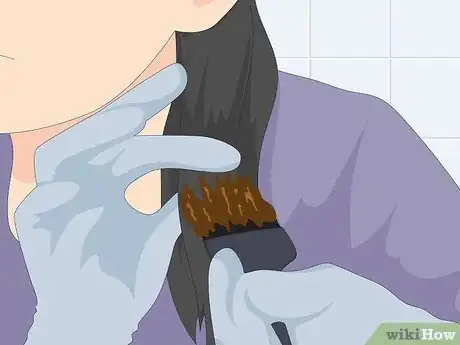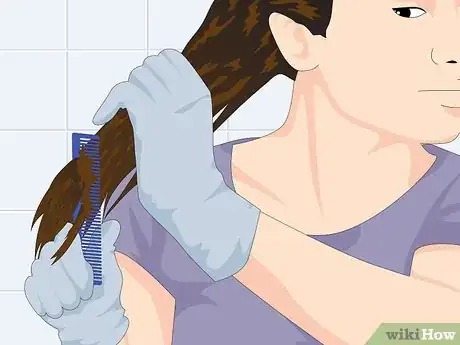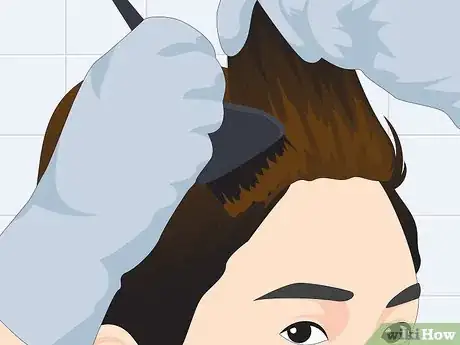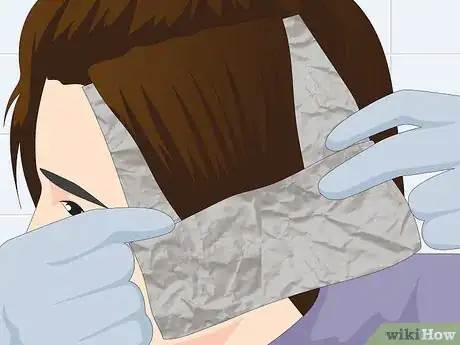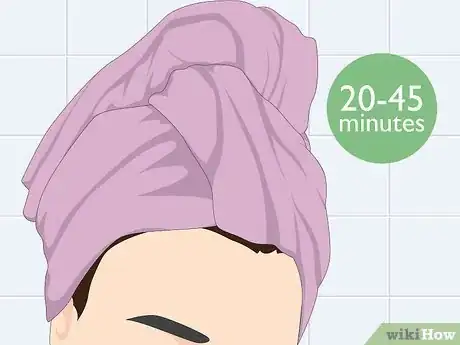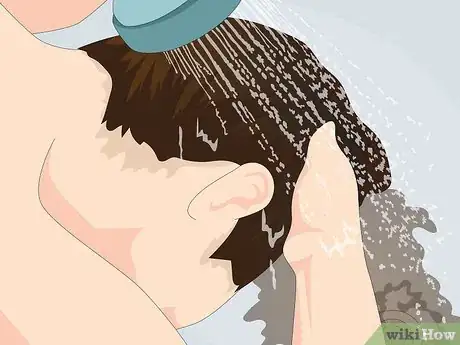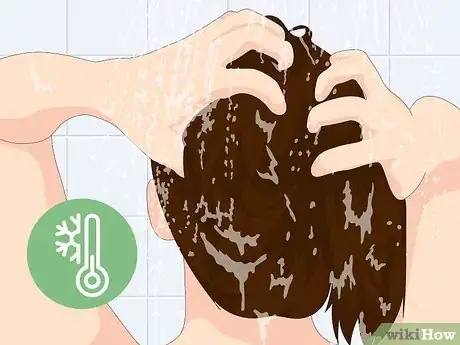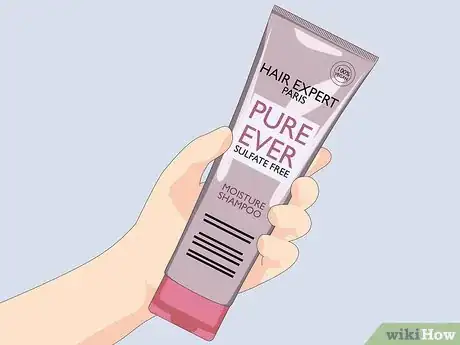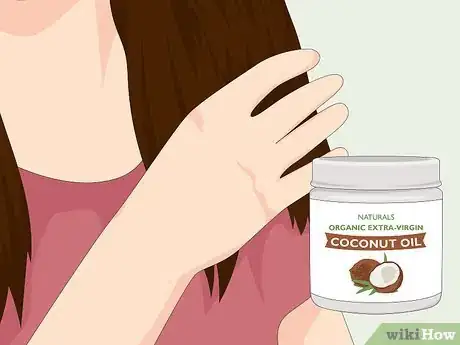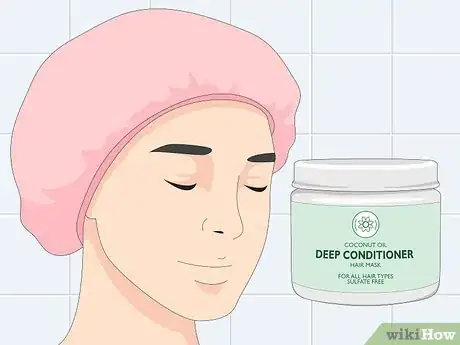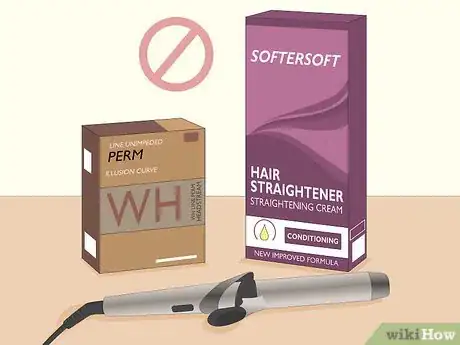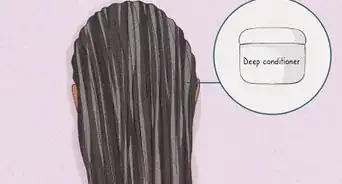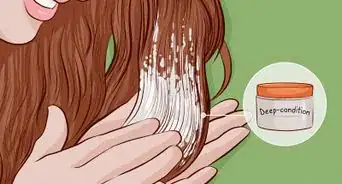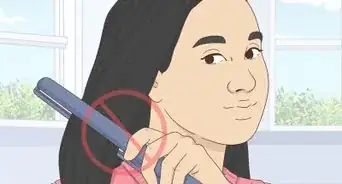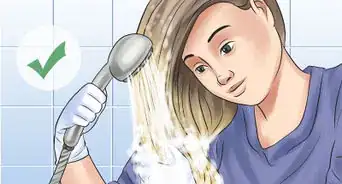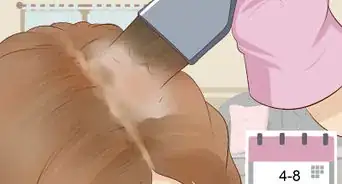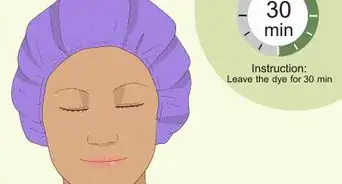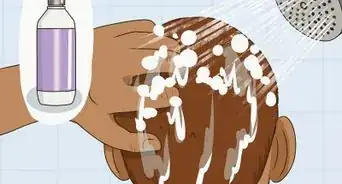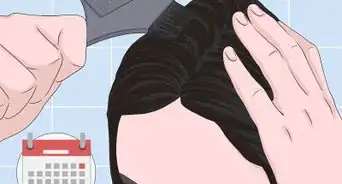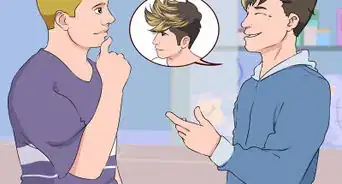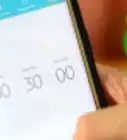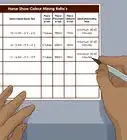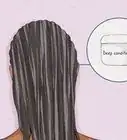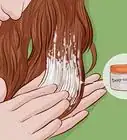This article was co-authored by April Ferri. April Ferri is a Professional Hair Stylist and the Co-Owner of Widows Peak Salon, a hair salon based in Los Angeles, California. With over ten years of experience, April specializes in hair coloring and enhancing and transforming natural tones into vibrant shades for beautiful and low maintenance hair. Her work has been featured in Voyage LA Magazine, and she has worked as a stylist for LA Fashion Week.
There are 8 references cited in this article, which can be found at the bottom of the page.
This article has been viewed 69,579 times.
Natural hair is African-textured hair that has not been straightened, relaxed, or chemically-treated in any way. The curl pattern can range from loose to tightly-coiled. Although beautiful, natural hair requires extra care when it comes to dyeing. The process is harsh, and if you don't do it correctly, you can damage your hair. Knowing which products to use will also help the color show up better.
Steps
Preparing to Dye Your Hair
-
1Wash your hair 3 to 4 days before you dye your hair. You want your hair to be clean, but not too clean. Washing it 3 to 4 days beforehand will ensure that your hair is free of dirt and build-up, but has developed enough oils to protect it during the dyeing process.[1]
- Avoid using too many hair products 3 to 4 days before you dye your hair. This includes mousse, gel, and cream.
-
2Condition your hair on the day you choose to dye it. You can use a leave-in conditioner cream or spray. Allow your hair to air-dry, or speed up the process using a hair dryer on a cool setting. Once your hair is dry, you are ready to dye it. The conditioner will help keep your hair nourished throughout the process.[2]Advertisement
-
3Bleach and tone your hair if you want a vivid, pastel, or blonde shade. Separate your dry hair into 4 equal sections. Apply the bleach to 1⁄2 inch (1.3 cm) partings within those sections, starting from the ends, to make sure each strand is saturated. Leave it on for the time recommended on the package, but check your hair every 5 to 10 minutes in case it develops faster. Rinse the bleach out, then follow up with shampoo. Apply purple hair toner, afterwards following the instructions on the bottle.[3]
- Don't lighten your hair more than 3 levels at once. If you want to go lighter, go to a trained stylist, and be prepared for multiple sessions.
- You can tell how many levels you're lifting your hair based on the developer volume you use, from 10 to 40. A 30 volume developer typically lifts 3 levels.
- Consider balayage. This way, you won't have to retouch your hair as often because your roots will already be their natural color.[4]
-
4Buy a boxed dye specifically formulated for natural hair. The box will say that it is for "natural hair" or "women of color" on it. This type of dye is different from other boxed dyes in that it is much gentler. It is also designed to work on darker, more porous hair.
- If you have long hair, buy 2 to 3 boxes of hair dye in case you run out.[5]
- If your hair is short, 1 box of hair dye should be fine.
-
5Do strand test before dyeing all of your hair. Mix up your dye according to the package instructions, then apply it to a thin strand of hair behind your ear. Wait for the time recommended on the package, watching the strand closely. Rinse the dye out, then note the following:[6]
- If the strand didn't dye well, your hair is not porous. Do 2 dye sessions to avoid over-processing your hair.
- If the strand dyed faster than the recommended time, your hair is very porous. You should cut down the processing time.
- If the strand got the right color with the recommended time, your hair has medium porosity, and you are good to go!
Dyeing Your Hair
-
1Protect your clothing, skin, and work area. Drape an old towel or a dyeing cape around your shoulders. Apply shea butter or petroleum jelly to the skin around your hairline, ears, and nape. Pull on the plastic gloves included in your kit, then cover your floor and counter with newspaper.[7]
-
2Divide your hair into 4 sections. Start by parting your hair vertically down the middle, from forehead to nape. Next, part your hair horizontally at eye level, from ear-to-ear. Secure each section with a clip or hair tie. Don't worry if the sections are too thick at this point; you will be dividing them up further as you dye.
-
3Prepare the dye according to the instructions in the package. In most cases, you will need to pour or squeeze the dye (small bottle or tube) into the developer (large bottle), then close the developer and shake it. Sometimes, the kit also includes a nourishing oil, which you should add with the dye as well.
- You may also find a tube or bottle of conditioner in your kit. Save that for later.
- Add a packet of color corrector if you are going for a much lighter shade, such as blonde, to prevent it from turning too brassy. Read the instructions on the packet to find out how much you should add.
-
4Apply the dye to your hair from mid-lengths to the ends. Separate your hair sections into 1⁄2 inch (1.3 cm) partings, as you did when you were bleaching, to make sure the dye is saturated throughout your hair. Starting with a small parting in the back, apply the dye to the middle of the shaft. Work the dye towards the ends, then move onto the next section. Do the back sections first, then the front.[8]
- Be sure to tie or clip the sections as you finish them.
- Do not apply the dye to the roots just yet.
-
5Repeat the process, then comb the dye through your hair. Use the same technique as in the previous step: apply the dye to the middle of the shaft, then work it down towards the ends. Do the sections in the back of your head first, then to the ones in the front. Once you have your hair dyed, remove the clips/hair ties, then comb the dye through your hair using a wide-toothed comb.[9]
- Again, don't apply the dye to the roots just yet. Your roots will process much faster, so you want to save that for last.
- Comb your hair correctly: start combing from the ends, then work your way to just above the middle of the shaft.
-
6Apply the dye to the roots of your hair, starting from the lower layers. Use the nozzle of the applicator bottle to apply a line of dye to your roots, close to the scalp. Rub the dye into your hair, away from the scalp and towards the middle of the shaft, using an applicator brush if needed. Continue in this fashion, starting with the hair in the back and finishing with the hair in the front.[10]
- When you get to the front, do the bottom-most layers first. Save your front hairline and center part for last.
-
7Wrap pieces of aluminum foil around your hair. Wrap squares of aluminum foil around sections of hair, making sure to fold it over the ends. Don't worry if your roots are exposed. The aluminum foil will help trap the heat and help your hair absorb the dye better.
- Consider wrapping a larger piece of foil around your head, then a towel. This will trap the heat further. You can also use a plastic shower cap to achieve the same effect.
-
8Allow your dye to develop for the time recommended on the package. How long this takes depends on the brand that you are using. It can be anywhere from 20 to 45 minutes. Use the timer on your phone, stove, or microwave to do this; you can even use an egg timer or a watch.
-
9Rinse the dye out with cool or warm water, then condition your hair. Once the time is up, remove the towel and aluminum foil. Rinse your hair under cool water until all of the dye is out and the water runs clear. Apply the conditioner that came in the kit to your hair, let it sit for 2 to 3 minutes, then rinse it out with cool water.
- Do not use shampoo or hot water. Both of these can cause the dye to rinse out completely.
- If your kit did not come with conditioner, use any color-safe or sulfate-free conditioner instead.
Maintaining the Color
-
1Wash your hair with cool water to maintain its color and health. Hot water not only damages hair and causes it to become more frizzy and dry, but it can also cause dye to fade faster. If you want softer, healthier hair, wash it with cool water. This will also help the dye to last longer.
-
2Stick with sulfate-free shampoos and conditioners. Products made specifically for color-treated hair would also work. Avoid using shampoos and conditioners that contain sulfates, however, as they will remove the dye from your hair.[11]
- Sodium chloride-free shampoos are also good options.
-
3Moisturize your hair with oils, butters, and creams. You can use store-bought oils and butters, or you can use natural ones, such as coconut oil and shea butter. Apply the oils, butters, and creams to your hair whenever it starts to feel dry.[12]
- Keeping your hair moisturized is a big part of maintaining your color. The stronger your keep your hair cuticle, the better it's going to be able to hold onto the color.
-
4Deep conditioner your hair at least once per week. The deep conditioning mask can be homemade or store-bought. Apply the mask to damp hair. Cover your hair with plastic wrap, wait 20 minutes, then rinse it out.[13]
- If you are using a store-bought mask, make sure that it does not contain sulfates.
-
5Limit the heat styling and chemical treatments. Bleaching and dyeing is very harsh on hair, so you want to give your hair a break. Don't relax your hair after dyeing it. If you want to straighten your hair, use a good heat protectant and a low-heat setting on your flat iron. When possible, allow your hair to air-dry.
Community Q&A
-
QuestionWhen I dye it doesn't appear everywhere. Why?
 Community AnswerThat means that you either didn't apply equally everywhere or you need to get a different brand.
Community AnswerThat means that you either didn't apply equally everywhere or you need to get a different brand. -
QuestionWhat is an affordable dye brand that will last at least 2 weeks?
 Community AnswerTwo affordable dyes are L'Oreal and/or Clairol's Nice n' Easy. They last very long as they are permanent dyes, but also dye dark shades of hair really well in one kit. It really depends on how long, thick, and dark your hair is.
Community AnswerTwo affordable dyes are L'Oreal and/or Clairol's Nice n' Easy. They last very long as they are permanent dyes, but also dye dark shades of hair really well in one kit. It really depends on how long, thick, and dark your hair is. -
QuestionHow do I dread lock natural hair and maintain it?
 TheLailah GCommunity AnswerYou braid the hair all the way to the bottom, add gel to the braid and don't touch them. Then wash the braids and you are done.
TheLailah GCommunity AnswerYou braid the hair all the way to the bottom, add gel to the braid and don't touch them. Then wash the braids and you are done.
Warnings
- Dyeing your hair may change its curl pattern. Some people have noticed that if they bleach or lighten their hair, their curls loosen.[16]⧼thumbs_response⧽
Things You'll Need
- Boxed hair dye for natural hair
- Wide-toothed comb
- Old towel or dyeing cape
- Shea butter or petroleum jelly
- Sulfate-free conditioner
References
- ↑ https://www.teenvogue.com/story/how-to-dye-natural-hair
- ↑ https://www.teenvogue.com/story/how-to-dye-natural-hair
- ↑ https://www.naturallycurly.com/curlreading/hair_color/coloring-type-4-hair/
- ↑ http://www.cosmopolitan.com/style-beauty/beauty/news/a46646/natural-hair-dye-tips/
- ↑ http://www.cosmopolitan.com/style-beauty/beauty/news/a46646/natural-hair-dye-tips/
- ↑ https://www.teenvogue.com/story/how-to-dye-natural-hair
- ↑ https://www.youtube.com/watch?v=QKvsYiSFMQs&feature=youtu.be&t=1m55s
- ↑ https://www.youtube.com/watch?v=QKvsYiSFMQs&feature=youtu.be&t=2m35s
- ↑ https://www.youtube.com/watch?v=QKvsYiSFMQs&feature=youtu.be&t=4m5s
- ↑ https://www.youtube.com/watch?v=QKvsYiSFMQs&feature=youtu.be&t=4m27s
- ↑ https://www.naturallycurly.com/curlreading/hair_color/coloring-type-4-hair/
- ↑ http://www.curlynikki.com/2012/12/safely-coloring-your-natural-hair.html
- ↑ http://www.cosmopolitan.com/style-beauty/beauty/news/a46646/natural-hair-dye-tips/
- ↑ http://www.curlynikki.com/2012/12/safely-coloring-your-natural-hair.html
- ↑ https://www.naturallycurly.com/curlreading/hair_color/coloring-type-4-hair/
- ↑ http://www.cosmopolitan.com/style-beauty/beauty/news/a46646/natural-hair-dye-tips/
